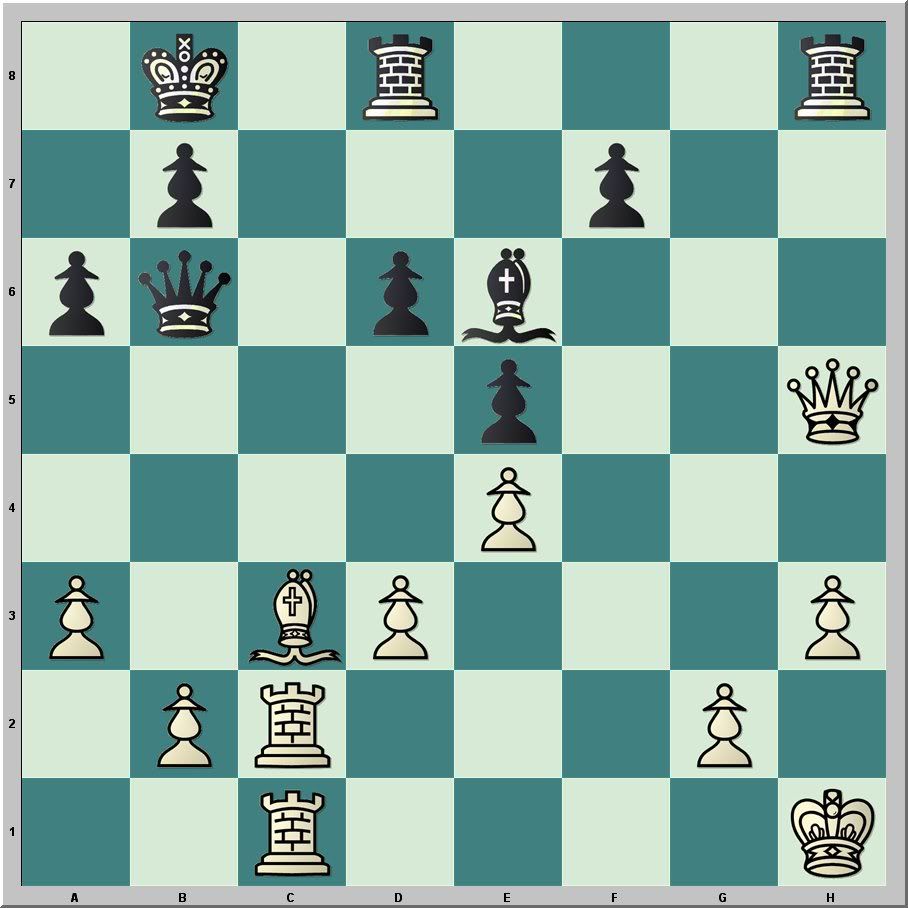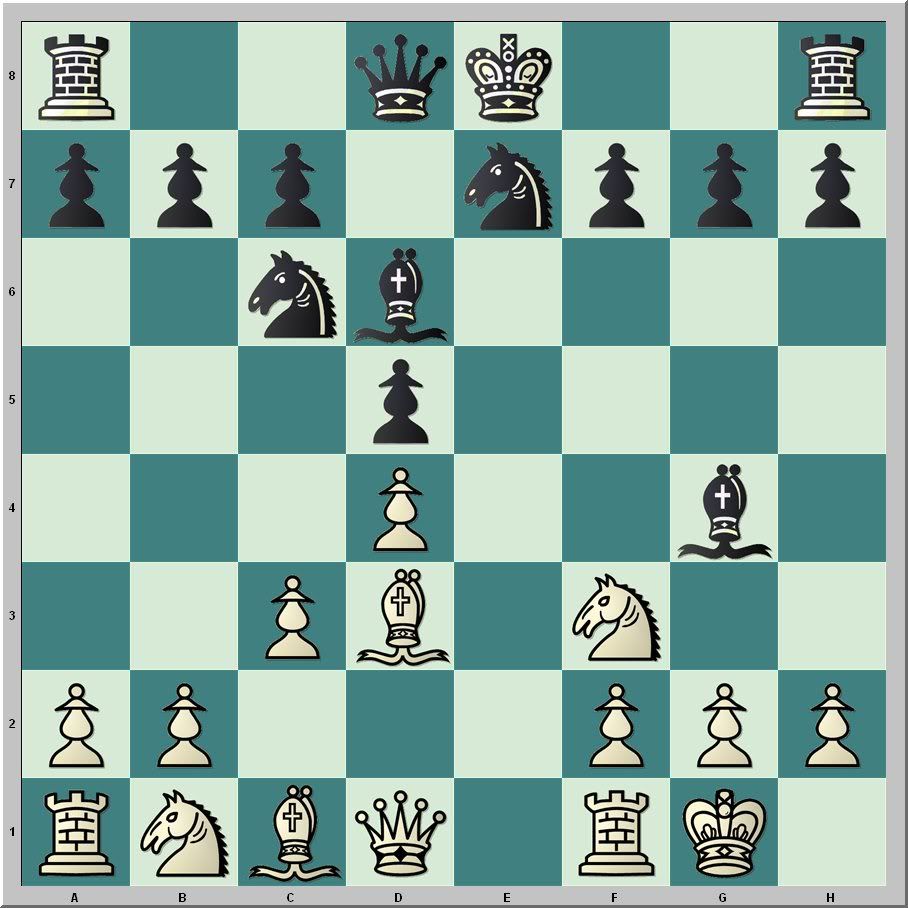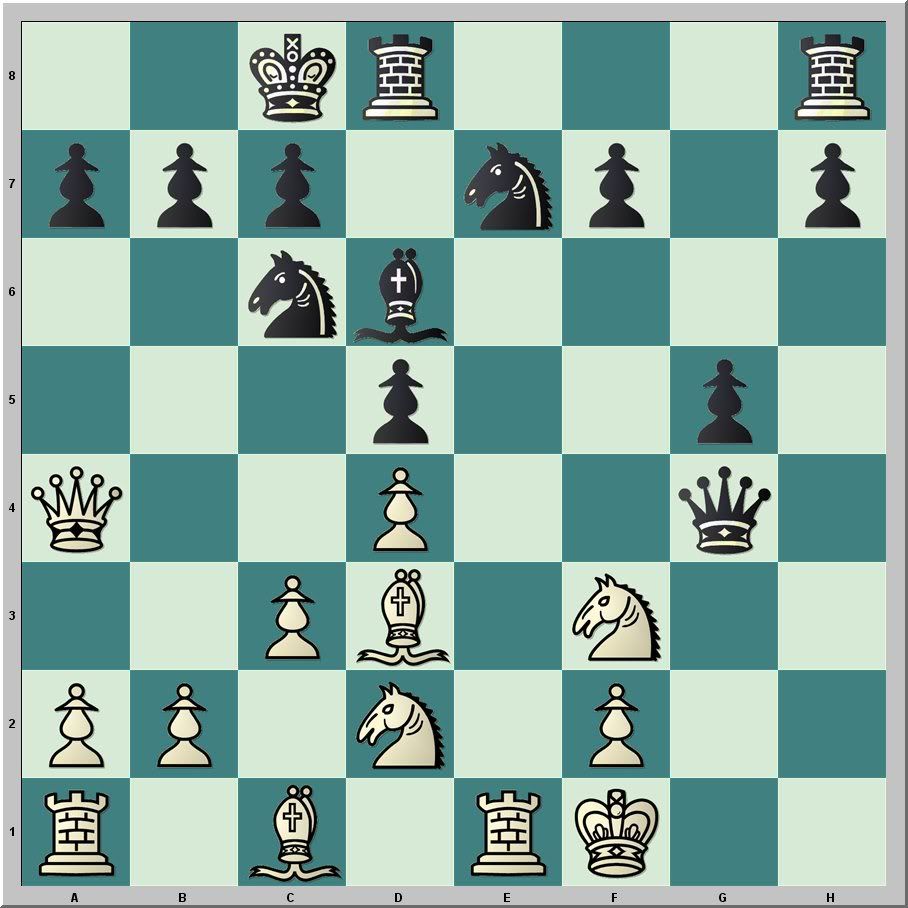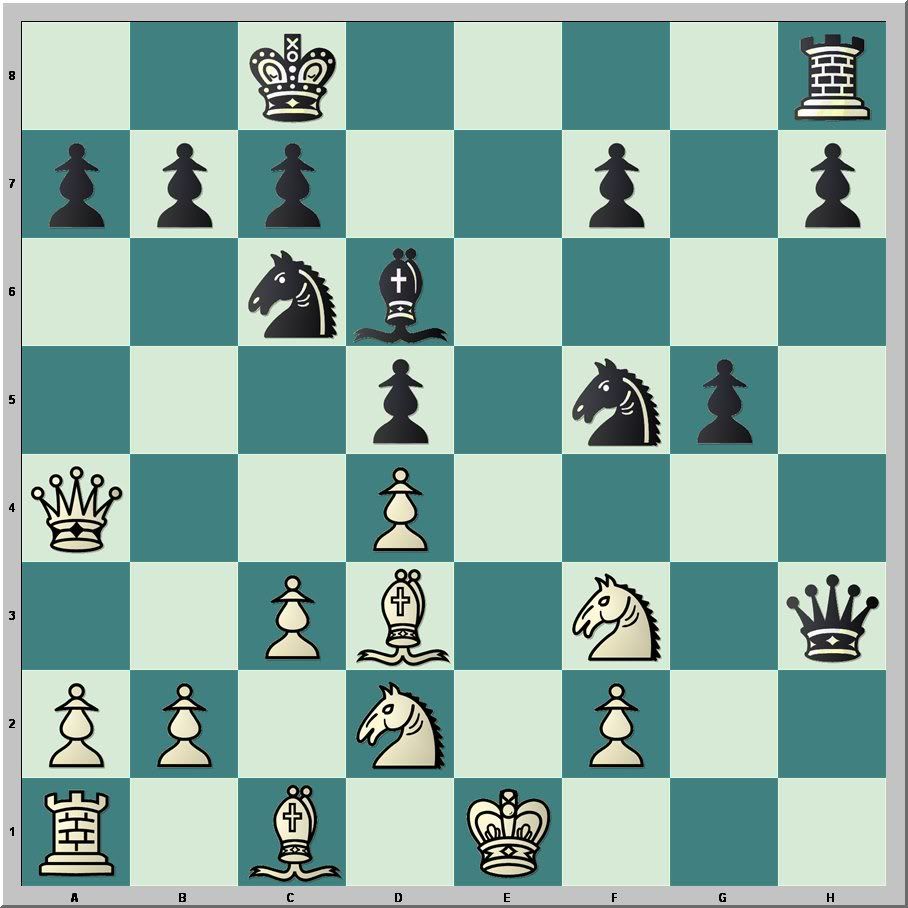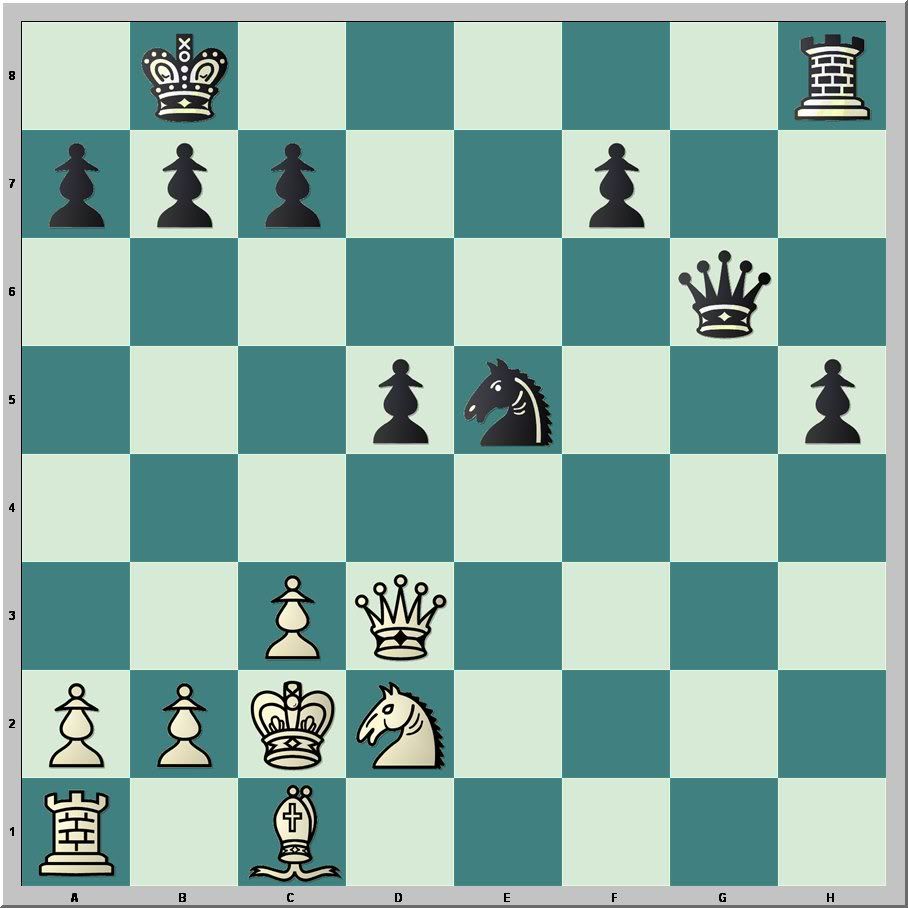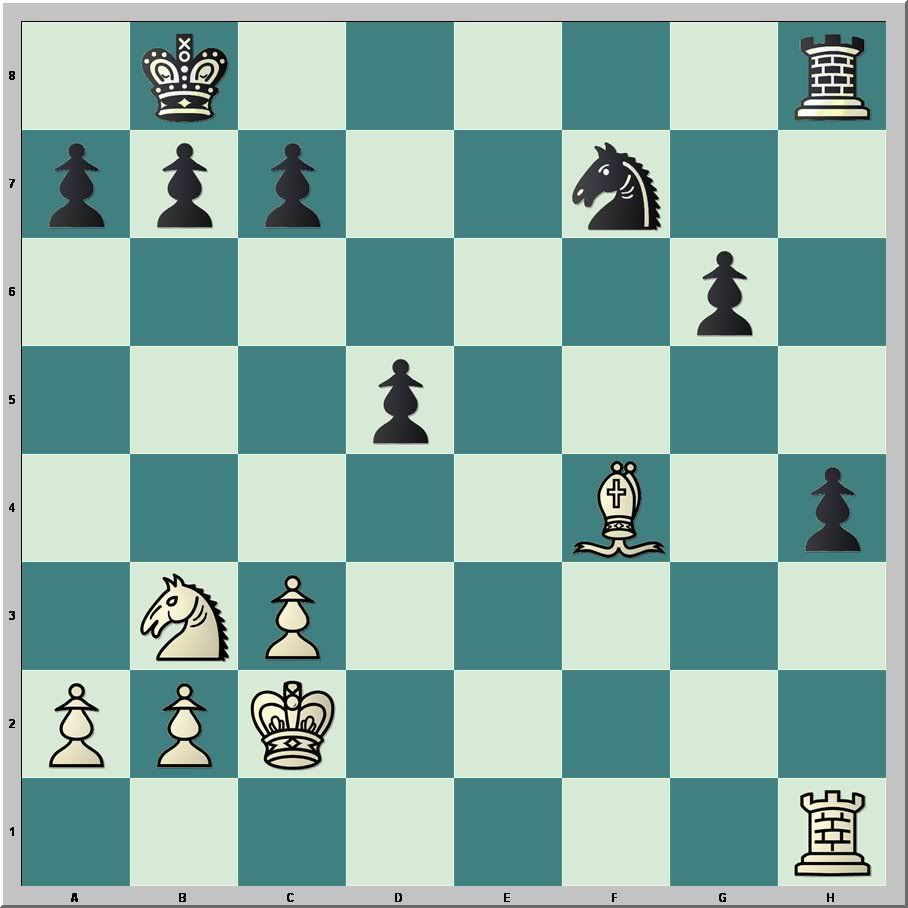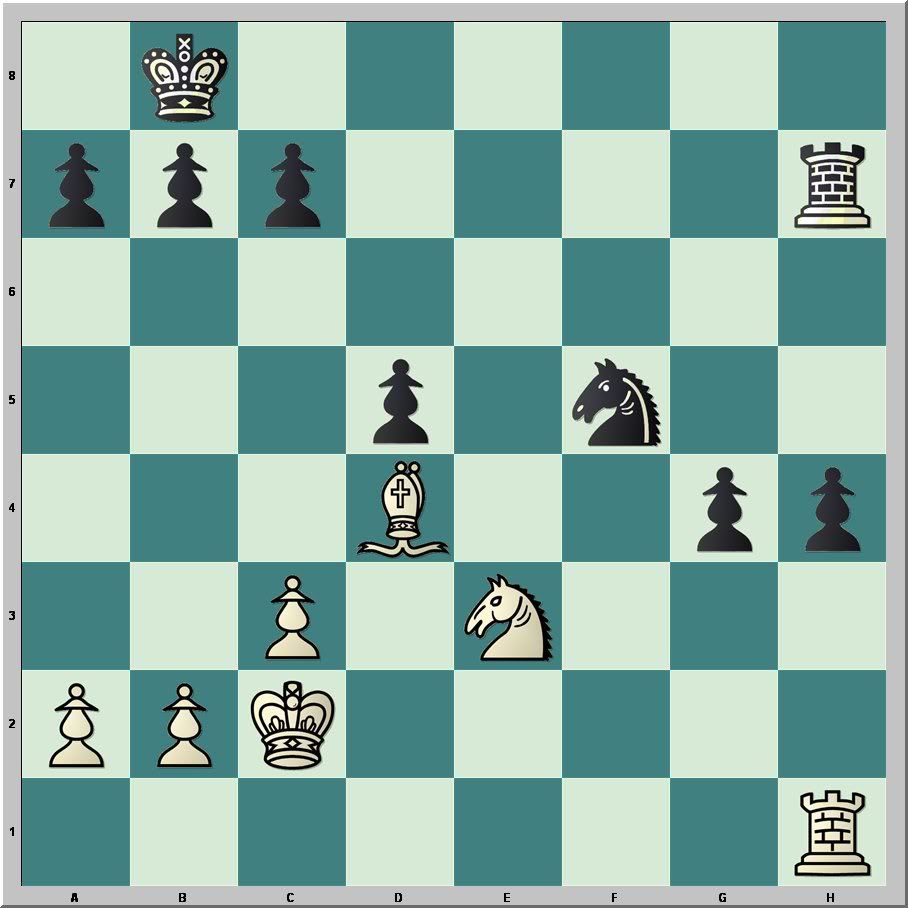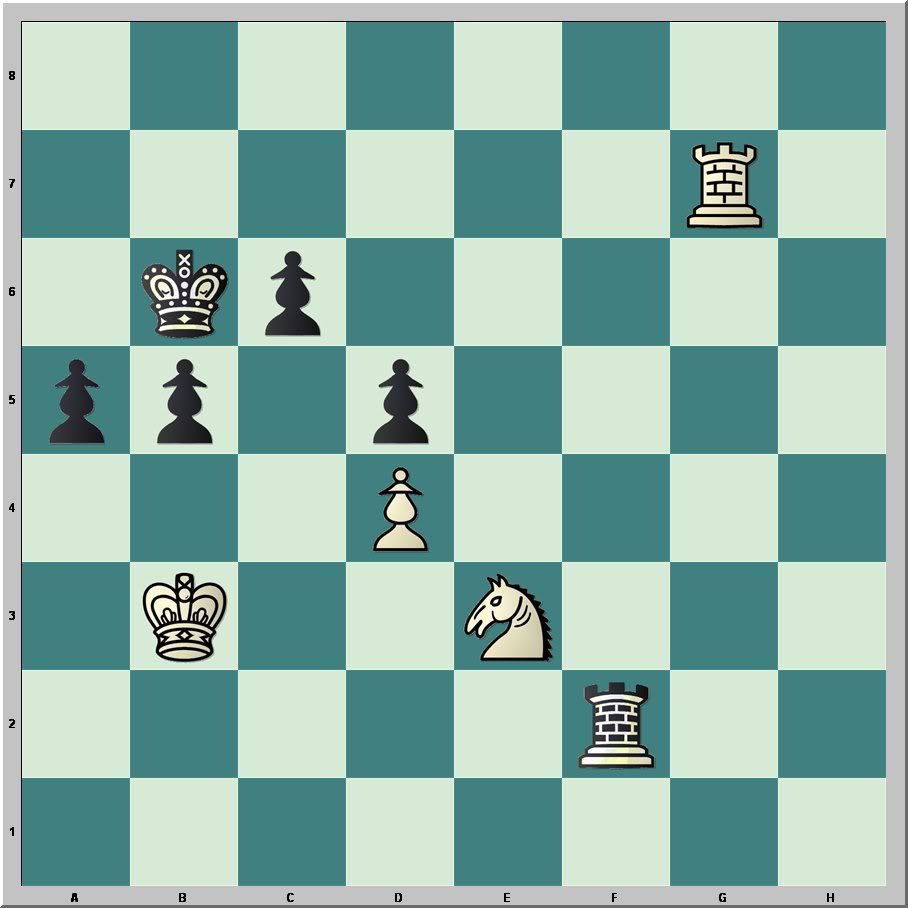The Fritz interface, which supports several engines calls this feature "full analysis." In Chessmaster software it is called "auto-analysis". I took a game played against a Chessmaster personality and let Chessmaster analyze at ten seconds per move. I printed the output. Then, Hiarcs 12 (my strongest engine currently running in the Fritz interface) examined the game at ten seconds per move.
Fritz permits a copy and paste that facilitates posting the analysis to this blog, and with Fritz I can create diagram files for upload to blogger. Saving or reproducing the Chessmaster analysis is more cumbersome, so I typed it into the existing ChessBase file (Fritz).
In the text below, the Fritz (Hiarcs) analysis is indicated (H12) as is Chessmaster's (CM). I've added a few comments (JS) beyond my headnotes to each section.
Fritz embeds suggested lines as replayable variations, although the software offers the option of having these as text. Chessmaster's suggestions can be replayed within that software, but does not create an exportable product. It is possible to export a file with Fritz's variations so as to replay in Chessmaster, but not the other way round.
The Opening
Both software programs name the openings and give the ECO code. Chessmaster's opening book appears limited, while Fritz draws from a database that is easily updated. Fritz looks for the moment of novelty; Chessmaster highlights deviation from the main line. Fritz does not comment on moves prior to the novelty. Chessmaster comments on each move, presenting simple expressions of general principles.
Marie - Stripes,J
Chessmaster 10th Edition Rated Game, 2009
B53: Sicilian: 2...d6: Lines with Qxd4 (H12)
1.e4
B00 King's Pawn Opening. The King's Pawn opening move is both popular and logical. It controls the center, opens lines for both th eQueen and the Bishop, and usually leads to an open game in which tactics, rather than slow maneuvering, predominates. (CM)
1...c5
Sicilian Defense. The Sicilian Defense has an ancient lineage. It creates an unbalanced position in which both sides have full rein for play, and allows Black to call the shots at least to some extent. (CM)
2.Nf3
White's normal response prepares d4 and avoids such committing moves as f4 or d3 or Nc3, which have their own rationale. (CM)
2...d6 3.d4 cxd4 4.Qxd4 Nc6
B53 Sicilian Defense / Chekhover Variation (CM)
5.Qc3
Out of Opening Book. Bb5 would have been in the Sicilian Defense / Chekhofer Variation opening line. Moves it to safety. (CM)
5...Nf6
Disengages the pin on Black's pawn at g7 and attacks White's pawn at e4. Removes the threat on White's pawn at e4. (CM)
6.Nbd2
Removes the threat on White's pawn at e4. (CM)
6...g6 7.Bb5 Bd7
White has a very active position. (H12)
Frees Black's knight at c6 from the pin. (CM)
8.Nc4N
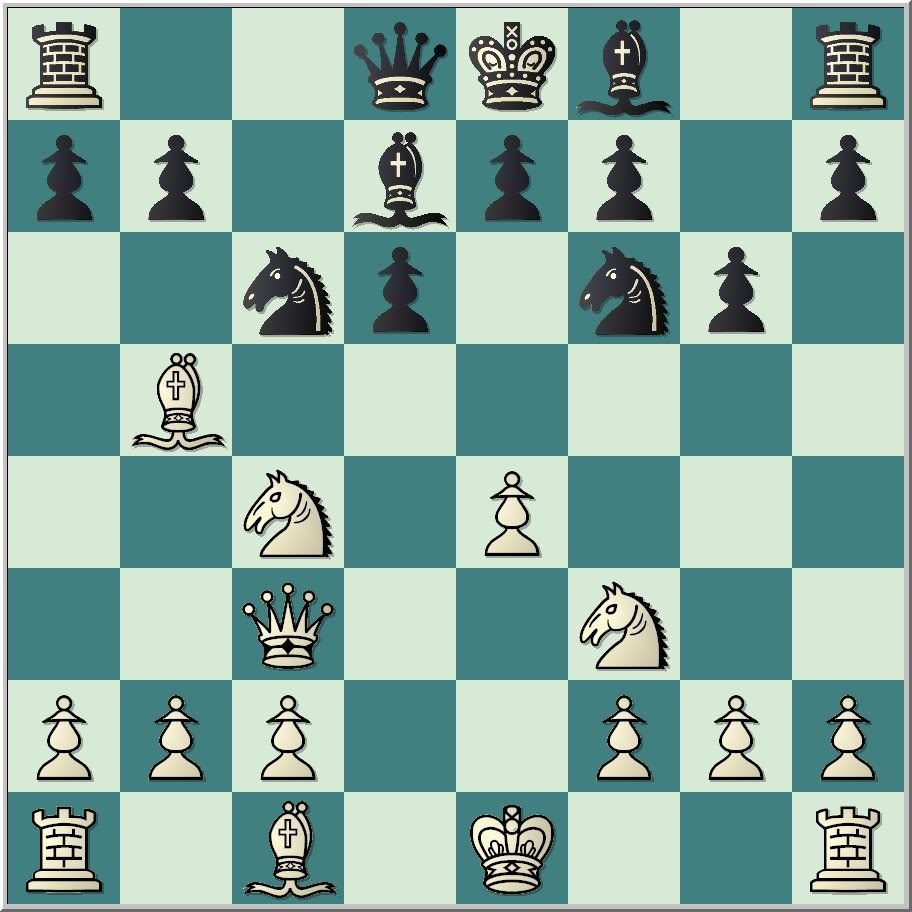
Slightly better is O-O. (CM)
8.0–0 Rc8 9.Nd4 Bg7 10.Bxc6 Bxc6 11.Qf3 Bd7 12.c3 0–0 13.Re1 e5 14.N4b3 b5 15.Qe3 a5 16.Nf3 Bc6 17.Qd3 Qc7 18.c4 bxc4 19.Qxc4 a4 20.Nbd2 Qb6 21.Qd3 Ng4 22.h3 Nxf2 23.Qxd6 Nxe4+ 24.Kh2 Nxd6 25.Nf1 Bxf3 26.gxf3 Qf2+ 27.Kh1 Qxe1 28.Bd2 Qxa1 29.Kg2 Rc1 30.Kf2 Rxf1+ 31.Ke3 0–1 Avramov,L-Schaal,R/Bad Wiessee 1997/CBM 61 ext (H12)
8.Qb3 Bg7= (H12)
8...Rc8
8...Bg7 9.0–0 =/+ (H12)
9.Bg5
Block's Black's pawn at g6 and clears the way for a kingside castle. (CM)
9...Bg7
Black has a cramped position. (H12)
10.Rd1?
Slightly better is O-O. (CM)
Better is 10.0–0!?=/+ is the best option White has (H12)
10...0–0–+ (H12 evaluation)
11.Bxf6
Partially pins Black's pawn at e7, protects White's pawn at e4, and blocks Black's pawn at f7. (CM)
11...Bxf6
Frees Black's pawn at e7 from the pin and attacks White's queen. Black wins a bishop for a knight. Material is even. (CM)
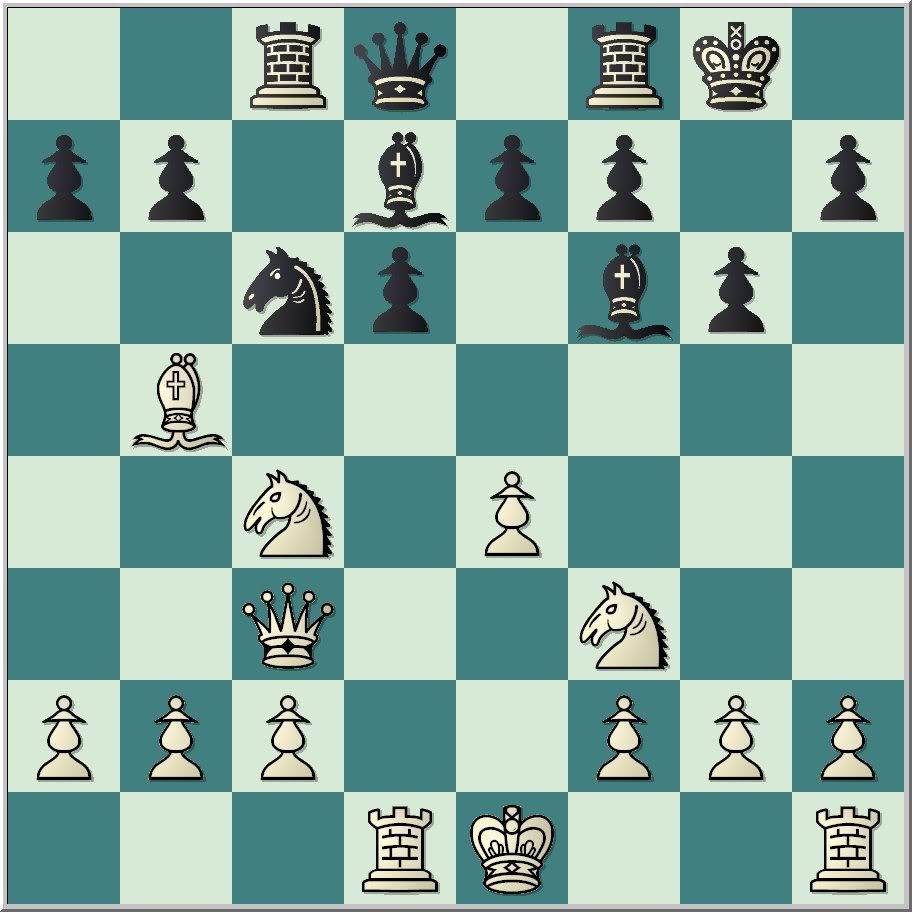
12.Qa3 a6 13.Bxc6 Bxc6 14.Ncd2 Qb6 15.Rb1
15.b3 Bc3 16.0–0 a5-/+ (H12)
15...Bb5–+
Attacks White's pawn at c2 and hampers the opponent's ability to castle kingside. (CM)
Hiarcs 12 gives the evaluation that Black has a decisive advantage.
Critical Position
I noted yesterday in "Chessmaster Nonsense" that Chessmaster's post-game comments draw attention to the most dramatic change in numerical evaluation, rather than the game's turning point. But, full analysis of a game should do better. According to Chessmaster, 16...Bd7 was my most serious error. Fritz (running Hiarcs) is less certain, opining that Black already has a decisive advantage after 10...O-O. Hiarcs points out a number of improvements in Black's play that would have maintained this decisive advantage more assuredly.
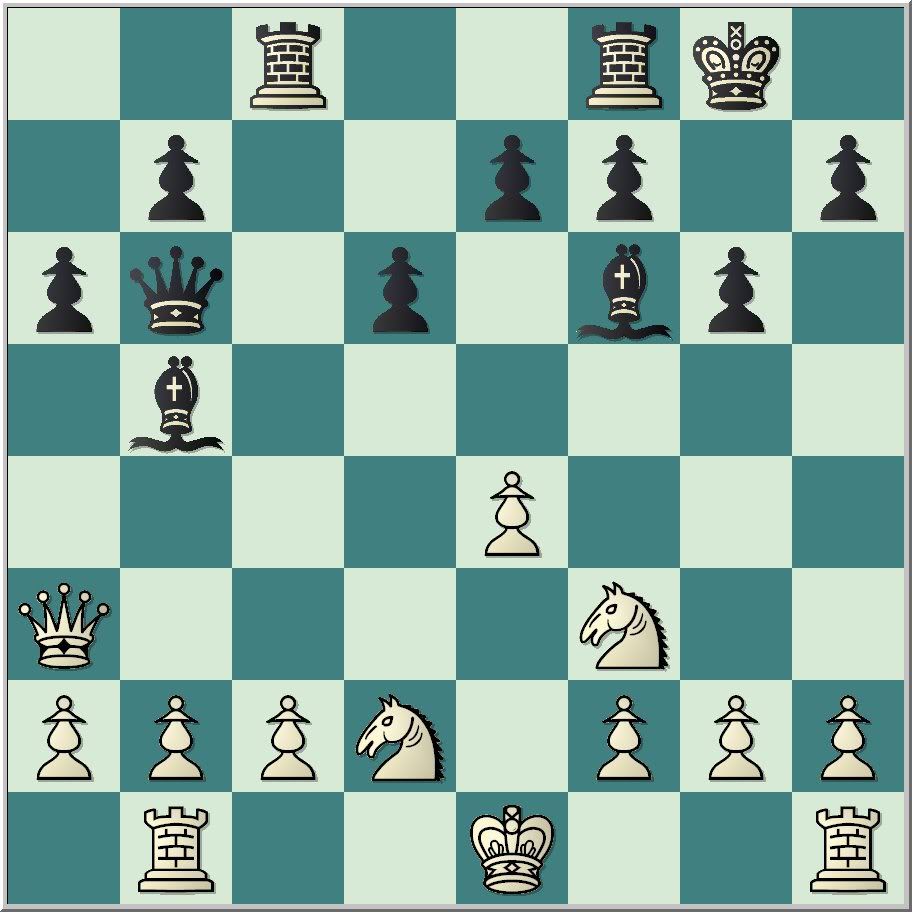
16.c4
Slightly better is Rc1. (CM)
16.Rc1–+ (H12)
16...Bd7
Leads to 17.O-O Be6 18.Rfc1 Bg7 19.B4 f5 20.c5 dxc5 21.bxc5 Qc7, which wins a pawn for a pawn. Better is Bxc4, leading to 17.Nxc4 Rxc4 18.O-O Rfc8 19.Qd3 Rc2 20.a3 Bxb2 21.Ne1 R2c3 22.Qd2, which wins a knight and two pawns for a bishop. This was black's only serious miscue, but black was able to stay close and eventually mated. (CM)
Better is 16...Bxc4!? 17.Nxc4 Rxc4–+ (H12)
17.b4
17.0–0 g5=/+ (H12)
17...Qc7
17...Be6 18.Rc1-/+ (H12)
18.h4
[ 18.0–0!?-/+ (H12)
18...Be6 19.h5 Bxc4
Hinders the opponent's short castle. Black wins a pawn. (CM)
19...b5 20.hxg6 fxg6 21.cxb5 axb5 22.0–0–+ (H12)
20.Rc1-/+
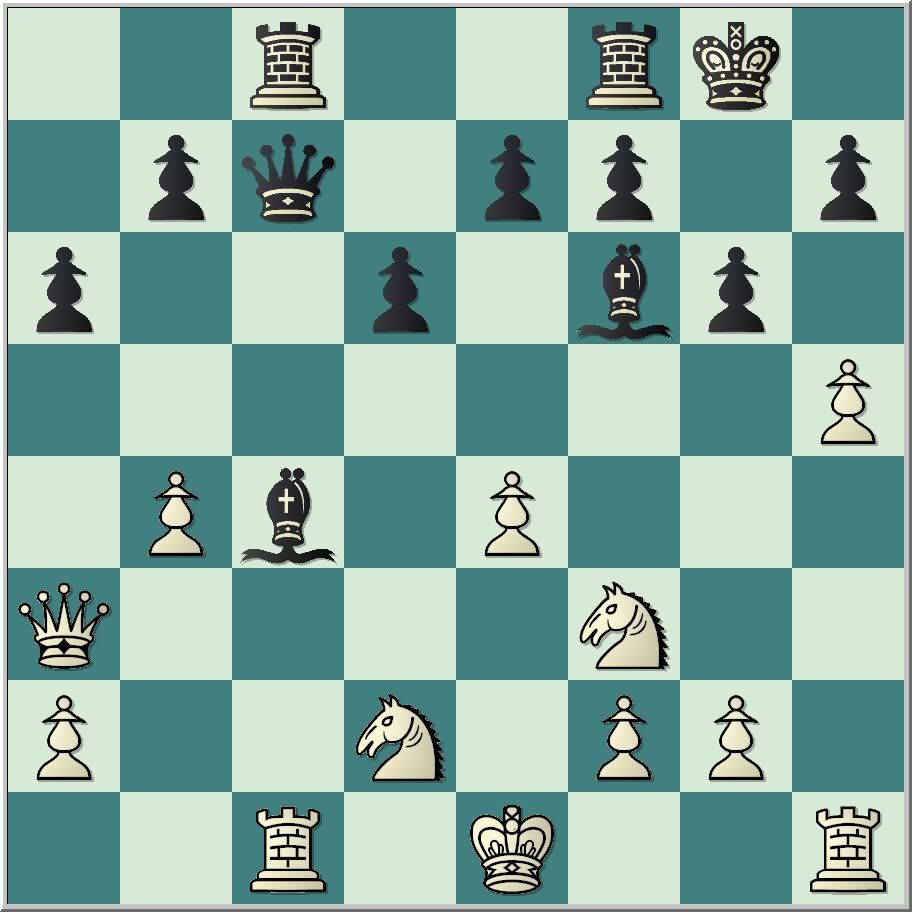
20...b5 21.e5
Slightly better is Nxc4. (CM)
21.Nxc4!? bxc4 22.hxg6 fxg6 23.Qxa6-/+ (H12)
21...dxe5–+ 22.hxg6
Isolates Black's pawn at h7. (CM)
22...fxg6 23.Nxc4 bxc4 24.Qe3
24.0–0 Qc6–+ (H12)
24...Qd6
Attacks White's pawn at b4 and seizes the open file. (CM)
25.0–0 Qxb4 26.Nxe5 Bxe5
26...c3 27.Nd7 Rf7 28.Nxf6+ exf6 29.Rc2–+ (H12)
27.Qxe5
White wins a bishop and a pawn for a knight and a pawn. Black is ahead by two pawns in material. (CM)
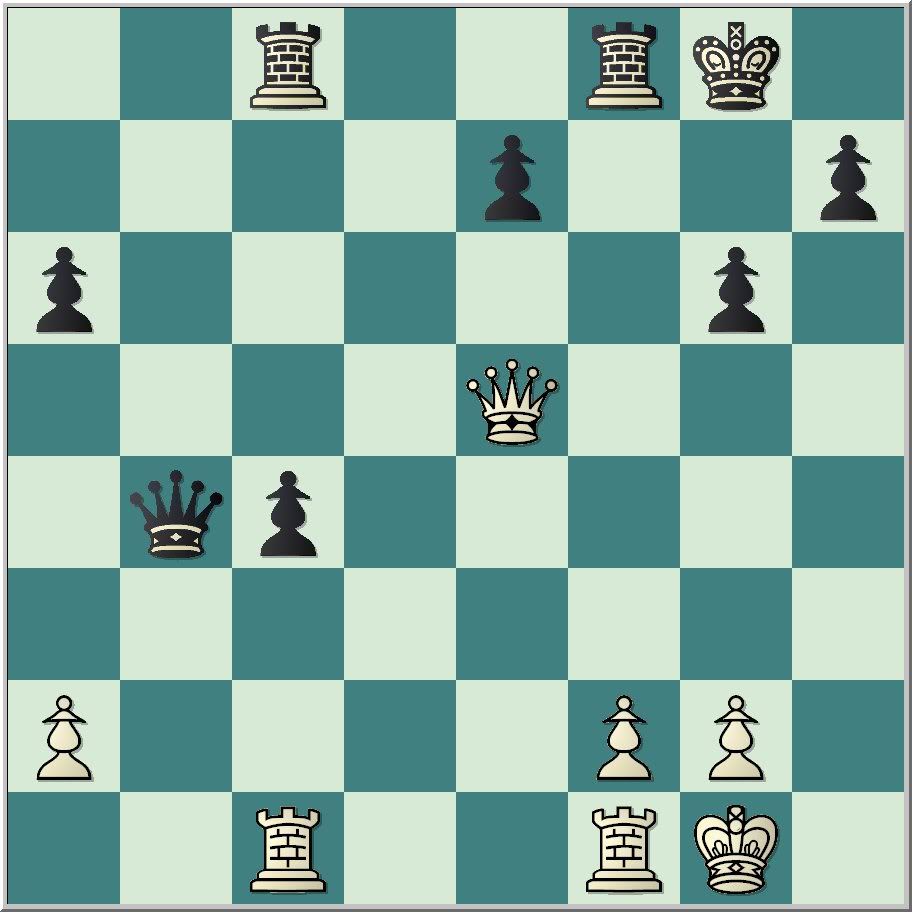
Finishing a Rout
Inexplicably, Chessmaster identifies 47.Rf6 as "white's only meaningful blunder." By the time the game reached this position, we were in an endgame that I could win against Anand or Carlsen. There had to be significant errors earlier in the game.
27...Qd6 28.Qe3 Rf5 29.Rfe1 Rh5 30.Qxe7 Qxe7
Better is 30...Qh2+!? 31.Kf1 Qh1+ 32.Ke2 Qxg2 33.Qe6+ Kg7 34.Rxc4 Rxc4 35.Qe7+ Kh6 36.Qf8+ Kg5 37.Qe7+ Kg4 38.Qe6+ Rf5 39.Qxc4+ Kh5–+ (H12)
31.Rxe7-/+ c3
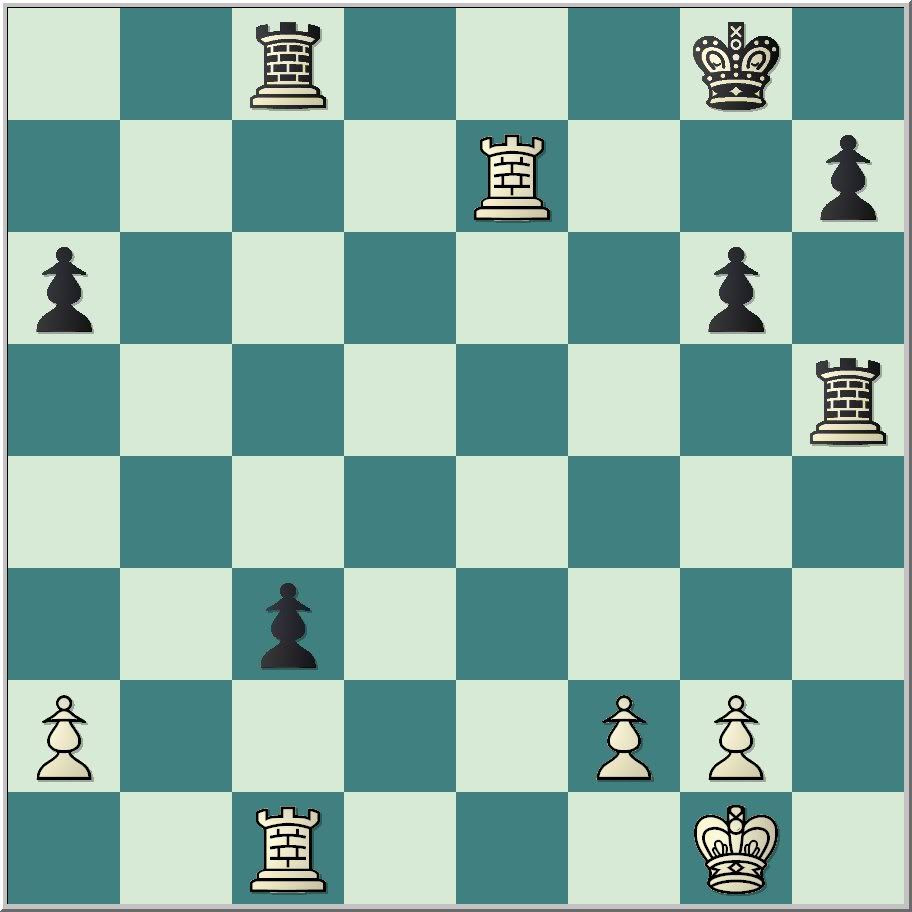
32.Re2
32.Rc2 Rd5 33.Kf1 g5-/+ (H12)
32...Rhc5 33.Re6
33.Rec2 Kf7-/+ (H12)
33...a5 34.f4
34.Kf1 c2–+ (H12)
34...Kf7
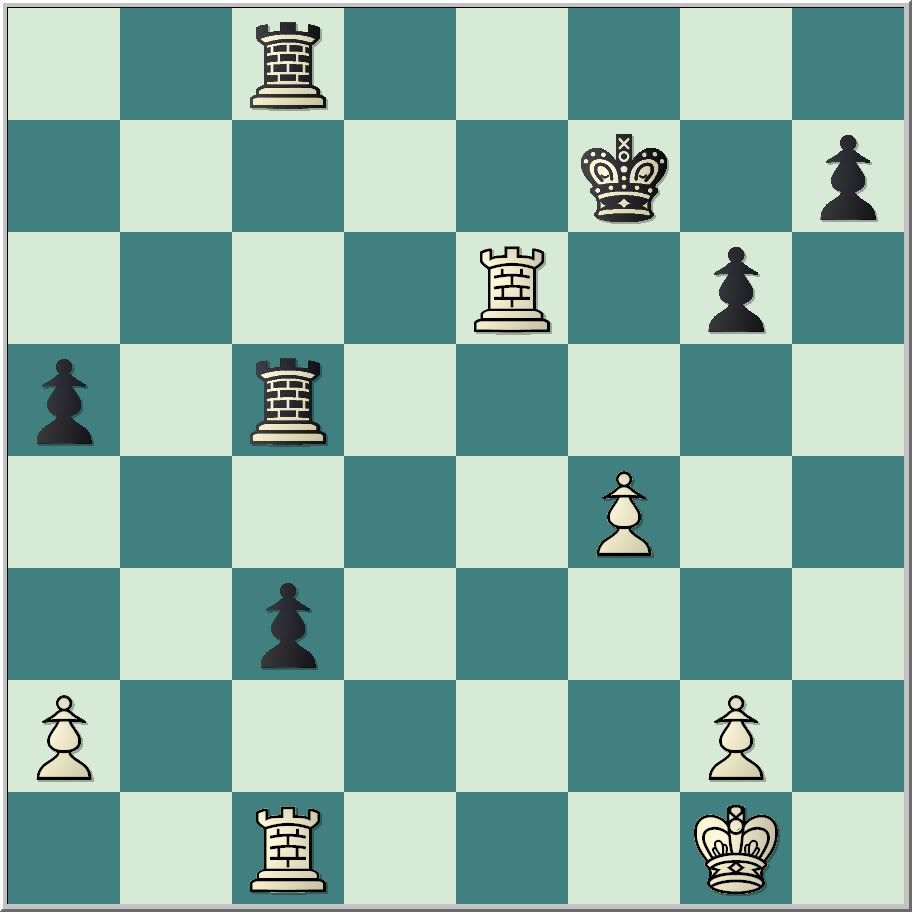
35.Re5??
The pressure is too much, White crumbles. 35.Re3–+ (H12)
Moves it out of immediate danger. (CM)
35...Rxe5 36.fxe5
Creates a passed pawn on e5. White wins a rook for a rook. Black is up a pawn in material. (CM)
Fritz's double question mark at 35.Re5 states all that need be said regarding this doomed pawn. Magnus Carlsen could not hold the White position here. (JS)
36...Ke6
Attacks White's pawn at e5 and blocks White's pawn at e5. (CM)
Neither program points out what a human coach might: Black's king will devour the pawn on the way to supporting the passed c-pawn with the intent to force the rooks off the board and crate a simple king and pawn endgame. (JS)
37.Kf2 Kxe5 38.Ke3
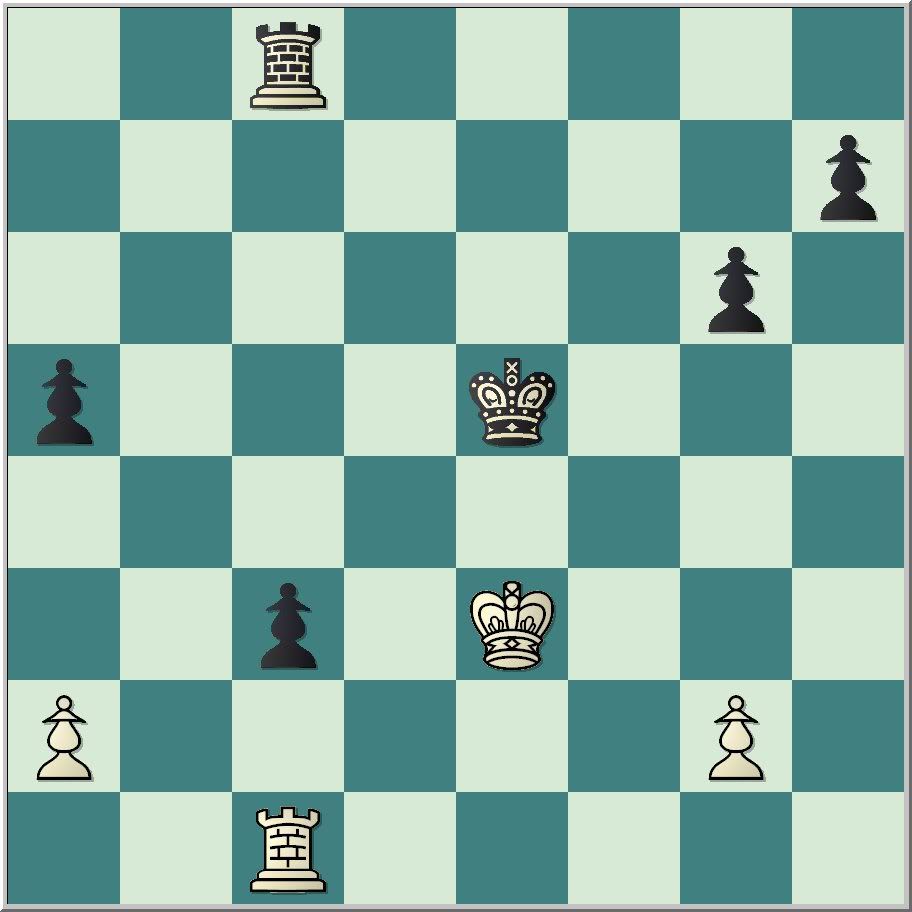
38...a4
38...c2!? and Black can already relax 39.Kd3–+ (H12)
This push would have been consistent with Black's idea to get the rooks off the board. (JS)
39.Kd3
39.Rc2 cannot change destiny 39...h5–+ (H12)
39...h5
Better is 39...c2!? might be the shorter path 40.g3–+ (H12)
40.Kc2 Ke4
40...h4 keeps an even firmer grip 41.Rb1 Rc4 42.Rd1–+ (H12)
41.Rf1
41.Rh1 a3–+ (H12)
41...g5 42.Rf6 h4 43.a3
43.Rf7–+ is the last straw. (H12)
43...g4

44.Rh6 Slightly better is Ra6. (CM)
44...Kf4 45.Rxh4
Pins Black's pawn at g4 and isolates Black's pawn at g4. White wins a pawn. Black is ahead by a pawn in material. (CM)
45.Ra6 what else? 45...Rc4 46.Rh6–+ (H12)
45...Kg3
Frees Black's pawn at g4 from the pin, forks White's pawn at g2 and White's rook, and blocks White's pawn at g2. (CM)
46.Rh6 Kxg2
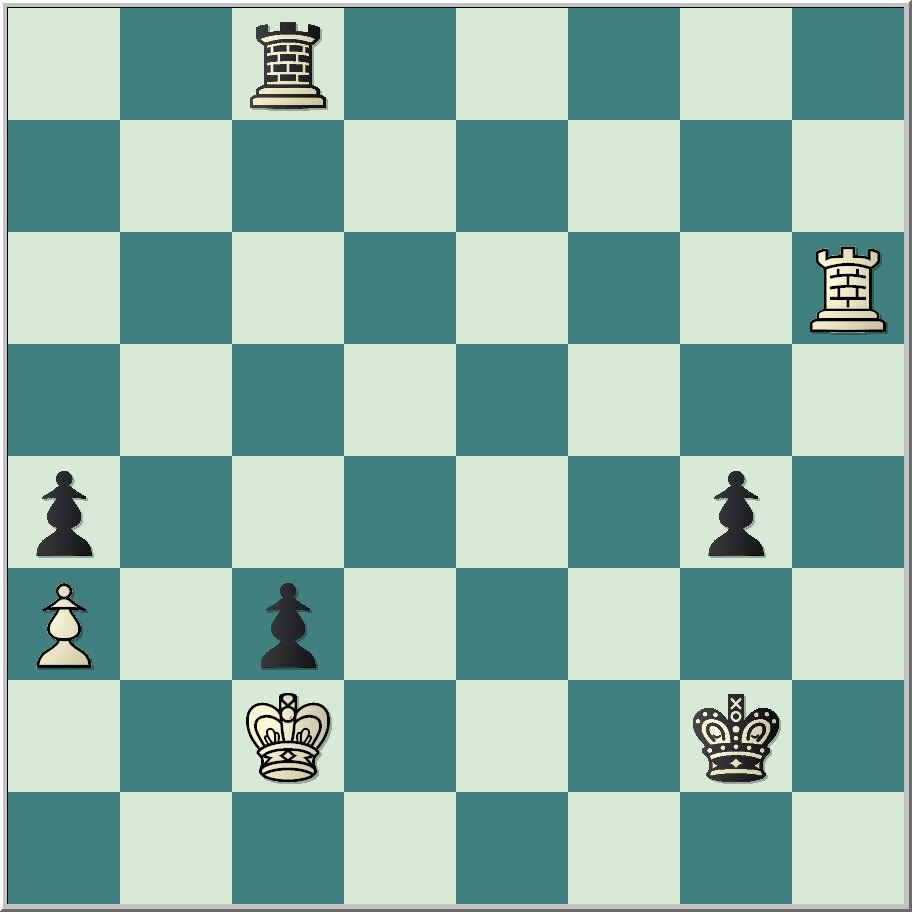
47.Rf6
Leads to 47...g3 48.Rh6 Rc4 49.Rf6 Kh3 50.Rh6 Rh4 51.Re6 g2 52.Re1 Kh2 53.Kxc3 g1Q 54.Rxg1 Kxg1. Better is Rh4, leading to 47...g3 48.Rxa4 Kf3 49.Ra7 Rc4 50.Rf7+ Rf4 51.Rd7 g2 52.Rd1 Rg4 53.a4 g1Q 54.Rxg1 Rxg1 55.Kxc3, which gains a pawn. This was white's only meaningful blunder, but it cost the game. White was not able to recover and was eventually mated. (CM)
Imagine some kid reading this analysis and developing the belief that White still ahead a fighting chance with the improvement Chessmaster recommends. That kid will suffer under a delusion. (JS)
47.Rg6 g3 48.Ra6–+ (H12)
47...g3 48.Rh6 Kf2
Better is Rc4 ... (CM)
Both programs offer long detailed variations in this phase of the game. These are labourious to type, so I'll refrain from revealing all of those offered by Chessmaster. (JS)
49.Rf6+ Kg1 50.Rg6 g2 51.Rg7 Rc5 52.Rf7 Kh2 53.Rh7+ Kg3 54.Rg7+ Kh3 55.Rg6
55.Kd1 cannot change what is in store for ? 55...Rc4 56.Rh7+ Kg3 57.Rg7+ Rg4 58.Rxg4+ Kxg4 59.Kc2 g1Q 60.Kxc3 Qc5+ 61.Kb2 Kf4 62.Ka2 Qf2+ 63.Kb1 Ke5 64.Kc1 Kd4 65.Kb1 Kc3 66.Ka1 Qb2# (H12)
55...Rc4
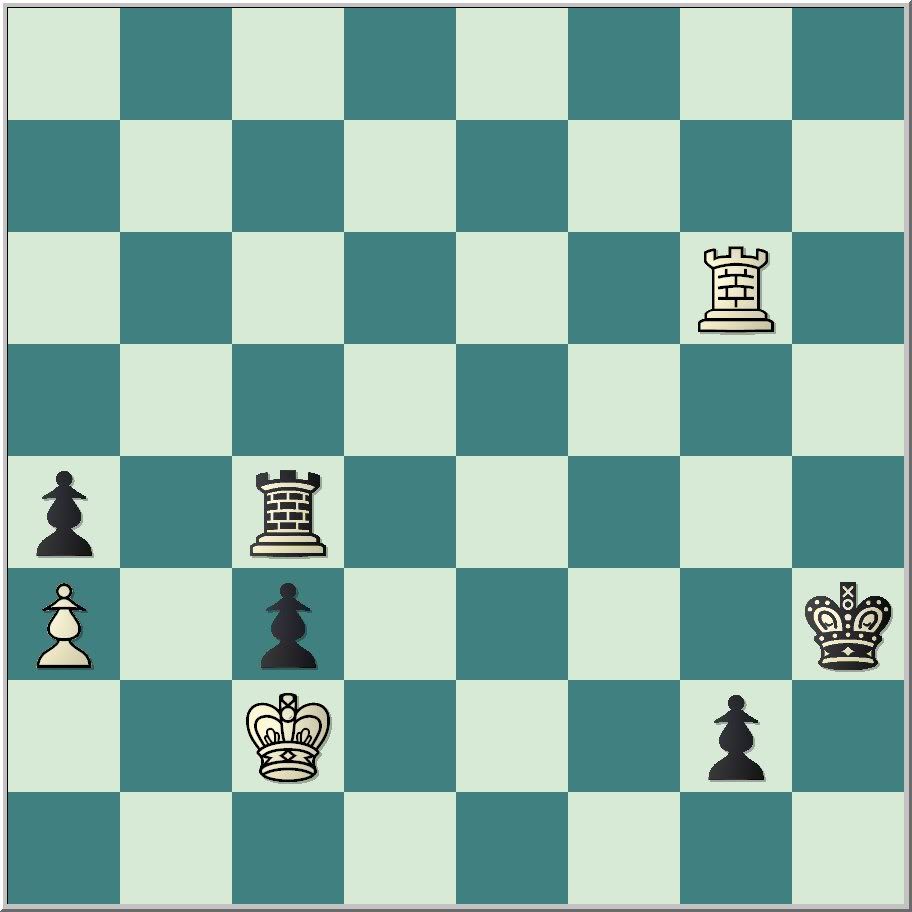
56.Kd3
56.Rg8 does not win a prize 56...Rg4 57.Rh8+ Kg3 58.Kxc3 g1Q 59.Re8 Qc1+ 60.Kd3 Qd1+ 61.Kc3 Qb3+ 62.Kd2 Rd4+ 63.Ke2 Qf3+ 64.Ke1 Qf2# (H12)
56...Rg4 57.Rh6+
57.Rf6 doesn't get the cat off the tree 57...g1Q 58.Rf3+ Kg2 59.Re3 Qd1+ 60.Kxc3 Qb3+ 61.Kd2 Rd4+ 62.Rd3 Rxd3+ 63.Ke2 Qd1# (H12)
57...Kg3
Black has a mate in 9. (CM)
58.Rb6
58.Rg6 doesn't change the outcome of the game 58...Rxg6 59.Ke4 g1Q 60.Kd3 Rg4 61.Kxc3 Qf2 62.Kd3 Rd4+ 63.Kc3 Qd2# (H12)
58...g1Q 59.Rb4
59.Rd6 cannot change what is in store for ? 59...Qd1+ 60.Kxc3 Qxd6 61.Kb2 Rc4 62.Ka2 Rc1 63.Kb2 Qd2# (H12)
59...Rxb4
59...Qc5 60.Rb5 Qxb5+ 61.Kxc3 Kf3 62.Kc2 Ke2 63.Kc1 Rc4#
60.axb4

60... c2!
Mate threat. (H12)
Here, Fritz created a training exercise, another useful feature wholly lacking in Chessmaster.
61.Kxc2
61.Kxc2 a3 Passed pawn. (H12)
61.-- c1Q Mate threat. (H12)
Null moves are not within Chessmaster's analysis capabilities. (JS)
61...Qd4
61...Qe3 62.b5 Kf3 63.b6 a3 64.b7 Ke2 65.b8Q Qd3+ 66.Kc1 Qd1# (H12)
62.b5 Qc4+
62...Kf4 63.b6 Ke3 64.b7 Qb6 65.b8Q Qxb8 66.Kc1 Kd3 67.Kd1 Qb1# (H12)
63.Kd2 Kf3
63...Qxb5 64.Kc2 Kf3 65.Kc1 Qd3 66.Kb2 a3+ 67.Ka1 Qe2 68.Kb1 Qb2# (H12)
64.b6 Qb5
64...Qd4+ 65.Kc2 Ke3 66.b7 Qb6 67.b8R Qxb8 68.Kc1 Kd3 69.Kd1 Qb1# (H12)
65.b7 Qxb7 66.Kc3 Qb5 67.Kd4 a3 68.Kc3 Ke3 69.Kc2 Qb4
69...Qb2+ 70.Kd1 Qb1# (H12)
70.Kc1 Kd3 71.Kd1 Qb1#
71...Qd2# (H12)
0–1
Addendum, 3 March 2010
I added a brief note (follow link) concerning Chessmaster's online play. I played some 300+ games there when I first acquired Chessmaster 10th edition.

